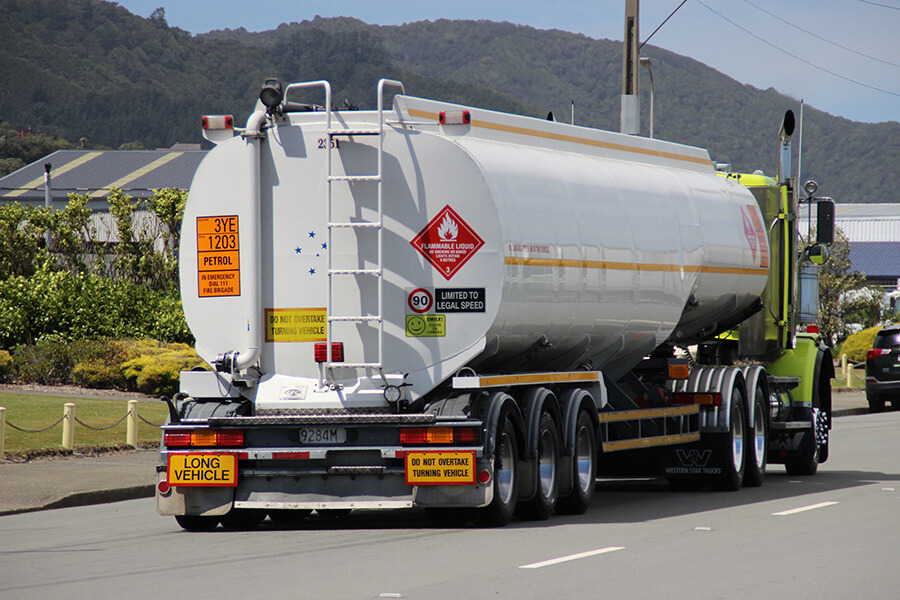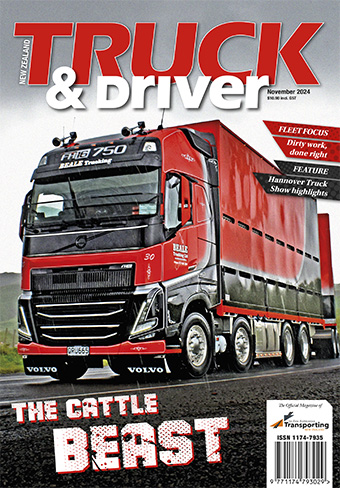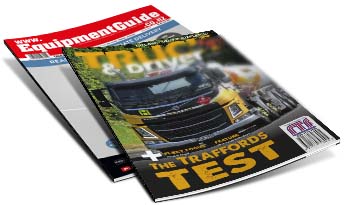Ia Ara Aotearoa Transporting New Zealand News


Climate Change Commission realistic about heavy transport
At the end of January, the Climate Change Commission released its draft report on how New Zealand can achieve our commitment to reach net zero emissions of long-lived gases, and significantly reduce biogenic methane emissions by 2050.
The challenges for NZ are clearly laid out in the report – further steps must be taken over the next few decades to align our actions with our emission reduction targets.
“For the heavy transport industry however, things aren’t that simple. The industry cannot accept the development of policy on a wing and a prayer. It can’t proceed into a future where the technology that powers its vehicles is imagined, rather than real,” says Road Transport Forum chief executive Nick Leggett.
“Emission reduction policy needs to be about what is possible, rather than what is desirable – and at present too much is unknown about the kinds of future energy that will power heavy vehicles.”
The Commission acknowledges that the vast majority of NZ’s freight task will remain on the road, but says switching some freight movements from road to rail and coastal shipping could reduce emissions.
...At the end of January, the Climate Change Commission released its draft report on how New Zealand can achieve our commitment to reach net zero emissions of long-lived gases, and significantly reduce biogenic methane emissions by 2050.
The challenges for NZ are clearly laid out in the report – further steps must be taken over the next few decades to align our actions with our emission reduction targets.
“For the heavy transport industry however, things aren’t that simple. The industry cannot accept the development of policy on a wing and a prayer. It can’t proceed into a future where the technology that powers its vehicles is imagined, rather than real,” says Road Transport Forum chief executive Nick Leggett.
“Emission reduction policy needs to be about what is possible, rather than what is desirable – and at present too much is unknown about the kinds of future energy that will power heavy vehicles.”
The Commission acknowledges that the vast majority of NZ’s freight task will remain on the road, but says switching some freight movements from road to rail and coastal shipping could reduce emissions.
“This may please the anti-road lobbyists, but the report indicates only about 4% of freight can switch by 2030 – and that’s a very small proportion of the 93% of the freight task currently shifted by road,” says Leggett.
“The reality is, moving freight by road will remain the most efficient way to move goods around NZ.”
Under the Commission’s approach, NZ will need to almost completely decarbonise land transport. This means eventually changing how most vehicles are powered, including heavy vehicles. The report recognises that medium and heavy trucks will be slower to electrify than the light vehicle fleet, because current battery technology does not provide the range needed for effective long-haul road transport.
The recommendation is that of the trucks imported in 2030, 15% of medium trucks and 8% of heavy trucks would be electric. By 2035, those proportions would increase to 84% and 69% percent respectively.
Says Leggett: “It is encouraging to see the Commission accepts that it can’t predict what the eventual solution for powering heavy transport will be. That won’t stop some others though, and we must guard against people who think they can lock in a solution for us so far into the future.”
The Commission also recommends scaling up the manufacture of low emission fuels like biofuels or hydrogen-derived synthetic fuels. In 2019 the Government released the Green Freight Project, a background paper on reducing greenhouse gas emissions from freight through the use of alternative fuels.
“For trucks, particularly heavy trucks, NZ is dependent on new power system development by international truck manufacturers, because we are too small a market to support independent development. The transport industry will adopt the new fuel technologies when they are widely and dependably available; reliable in terms of performance and servicing; and cost competitive,” says Leggett.
“What we have to bear in mind though, is that early adoption of new technology is risky and expensive, and any higher costs will be passed on to our customers and, eventually, all consumers, thereby increasing the cost of living.”
The choice of fuel (hydrogen/methanol/electricity) will be dependent on the availability and cost of those fuels in NZ. Each of the possible fuel types depend on there being an adequate electricity (or gas) supply for its manufacture, or direct use to recharge batteries. Therefore, policies for decarbonising the road freight industry must also consider the renewable electricity sector’s ability to supply the electricity required, as well as the investment impact of purchasing new equipment and the availability of technicians and resources to service that.
“Ultimately, delivery of freight is a service industry and the customer sets the terms and conditions,” says Leggett.
“The most significant reason road freight is increasing is the improvement of truck payload efficiency – that means bigger trucks carrying larger loads, reducing the number of truck trips. Efficiency gains through the uptake of HPMV and 50MAX have been realised in dairy, logs, livestock, aggregates and petroleum distribution.”
In the latest round of the Low Emission Vehicle Contestable Fund, FUSO and Hyundai Motors secured funding for both electric and hydrogen demonstration trucks respectively. Energy and Resources Minister Megan Woods says demonstrating and proving the potential for electric and hydrogen heavy vehicles is important, because heavy freight has an outsized impact on transport emissions.
Leggett believes the Government should acknowledge that heavy trucks meet some environmental imperatives – fewer journeys equals fewer emissions – and provide the road freight industry with some kind of financial incentive, as has been done with electric light vehicles.
The Government also confirmed new average emissions standards for light vehicles, a move that has concerned the Motor Industry Association. CEO David Crawford said while accepting the fuel economy standard is necessary, the speed at which NZ must reach the average target of 105 grams of CO2 per kilometre is the most aggressive and severe in the world.
Crawford urged the government to amend the target to 2030, saying the 2025 target date does not allow time for model development or vehicle sourcing arrangements, and does not recognise that for many local distributors their model choice is tied to the Australian market.
“This is something the transport industry fears too,” says Leggett: “Our focus must be on reducing our emissions as a country and as a world: Net zero by 2050 – that is the end-goal here.
“Right now, we don’t know what the future holds for the heavy transport industry, but the RTF is here to assist road transport businesses be more sustainable and prepare them for the uptake of future technologies – whether that be hydrogen, electric, synthetic, or some as yet unknown energy source.”




 + EQUIPMENT GUIDE - FREE
+ EQUIPMENT GUIDE - FREE
